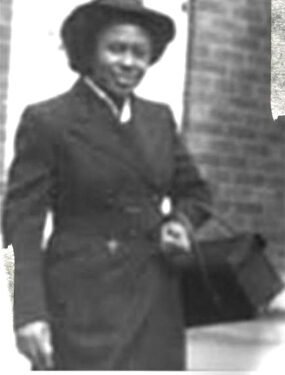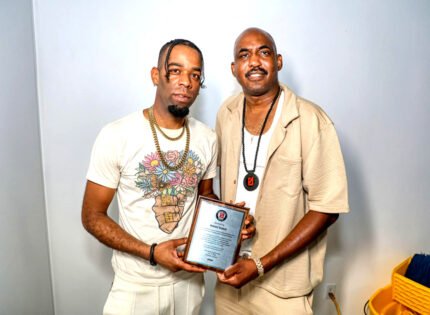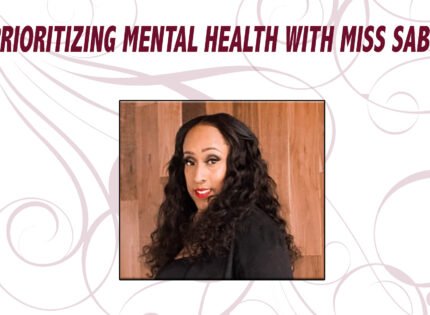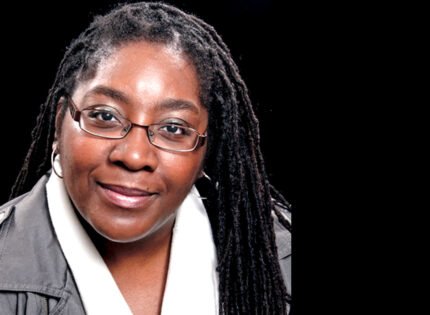Many have been talking at all levels, regarding the recent job-posting  situation for female orderlies at St-Eustache Hospital that stipulated candidates have “white skin.”
situation for female orderlies at St-Eustache Hospital that stipulated candidates have “white skin.”
At the governmental level the vocal marathon has been accompanied by calls for investigation, into the incident that thus far has evaded the classification of racism. According to Benoit Charette, Quebec’s newly-appointed minister responsible for fighting racism, the hospital “clearly violated the civil rights of employees who could not apply for this job offer.”
He added that “we suspect … it is clearly a lack of training at the human resources level” that resulted in the postings. They wanted”. Such a statement throws a considerable degree of doubt as to whether or not the minister is really up to the task of fighting racism as already he is displaying poor cognitive and visual dysfunction.
Another entrant to the AKWARDEMY OF DENIAL.
Elevating the Minister’s stance on the issue, the accompanying blatant reluctance to call a spade a spade, along with the blame shifting only serves to detract from the real issue—that the
healthcare system is a maelstrom of egregious discrimination, with a surfeit of unpleasant and distasteful incidents that beggars a more comprehensive look at the entire system.
This latest incident can safely be classified as “the one that got away.” Put plainly, “it’s nothing new in the system.”
There has been no revelation as to what violent behaviors were displayed by the patient in question towards Blacks that forced the hospital to comply with his discriminatory demand? How many Blacks were victims of the violence caused by his cognitive deficiency? It is apparent that there were others at the higher level seemingly also afflicted with cognitive dissonance, manifested in their blatant failure to think of a much better alternative solution than the one taken.
Nursing in Canada has a widespread history of complicity in racism. In the healthcare arena, racism has been as rampant as the Coronavirus, and strikes at the very core of the institution’s obligation to care for both patients and staff alike.
As a so-termed multicultural society, it is incumbent upon us all to forcefully repudiate all expressions of white supremacy, racial hatred, and bigotry.
Granted when sick and injured patients arrive at hospitals for treatment, they also bring with them their unhealthy prejudices and biases.
On the frontline of health care and healing, nurses may find themselves having to care for patients who prefer a nurse who is of the same race.
Patients—or their loved ones—may express their racial preference with negative comments and intolerant behavior, or directly voice their desire for another nurse. And in a perfect world, hospital management should not cater to racially biased requests or demands.
But anyone familiar with the history of how mainstream culture supremacy has stained the medical and nursing profession cannot be surprised that there are continued expressions of that virulent philosophy.
In 1874, the first nursing school in Canada opened in Ste. Catherine’s Ontario, but it was not until the 1940’s that Black students were allowed to attend, following pressure from community groups and organizations.
A Black Toronto native Bernice Redmon was one of those nurses. She wanted to become a nurse but was denied entry to nursing schools in Canada. Undaunted, she went instead to St. Phillip Hospital Medical College in Virginia, U.S.A. and graduated with her nursing diploma in 1945. Rebuffed by nursing schools across the province, Marissa Scott applied to Owen Sound General in her hometown of Southwestern Ontario. She was told: “Sorry, we don’t accept colored girls.”
After becoming the subject of a national campaign, Scott was eventually admitted to St. Joseph’s hospital nursing program, Guelph, in 1947.
Similarly, Nova Scotian civil rights and community activist Pearleen Oliver played an instrumental role in ending the color barrier in nursing. Like Marissa, Oliver wanted to train as a nurse but knew that the occupation was not open to her or other Black girls. Oliver waged “a concerted public and private campaign to draw attention to this and other forms of discrimination in Canada.”
Her relentless effort led to the first two young Black women, Ruth Bailey (Toronto) and Gywneth Barton (Halifax), to be enrolled as nursing students at the Children’s Hospital in Halifax in 1948.
On September 2, 1964 the Act Respecting Discrimination in Employment was introduced in Quebec. One day later, Gloria Clarke Baylis, a British-trained Caribbean migrant nurse, inquired about a permanent part-time nursing position at the Queen Elizabeth Hotel (QEH). She was told in response that the position had already been filled.
Less than a year later, Gloria appeared as the key witness in Her Majesty the Queen, (Complainant) v. Hilton of Canada Ltd., (Accused), to determine whether the Queen Elizabeth violated the new legislation.
Of noteworthy interest, is the fact that there was no mention of the existence of such an Act. The Act defines and stipulates the following as “discrimination:” “any distinction, exclusion or preference made on the basis of race, colour, sex, religion, national extraction, or social origin, which has the effect of nullifying, or impairing equality of opportunity or treatment in employment or occupation; but any distinction, exclusion or preference in respect of a particular job based on the inherent requirements thereof shall not deemed to be discrimination.
In Montreal, Black women who were able to train as nurses were restricted to treating Black patients. The common explanation for this discriminatory practice was that white patients did not want to be touched by Black nurses.
Discrimination in the Canadian healthcare sector is in no way exclusive or unique to Black nurses. It also extended to Black medical school aspirants. In 1916, as part of the restrictions imposed on Black medical students, the Montreal Maternity Hospital (later merged with the Royal Victoria Hospital in 1926), attached to Mc Gill University was successful in barring Black male students from gaining admission.
McGill University further went on to adopt racial restrictions in admissions of Black students in the 1920’s. –1930’s and again from 1945 until the early 1960’s. Black medical students in Montreal were also barred from doing their internship at hospitals in Montreal between 1930 and 1947, and McGill had to arrange for their Black medical students to fulfill their residency requirements at Howard University in Washington, D. C.
In 1918 the university senate at Queen’s University in Kingston, Ontario voted to ban Black students from further admission to the Queen’s medical program. At the time, around 15 Black men were enrolled; representing one of the highest proportions of Black students of any medical school in the country.
They blamed their decision on the racial intolerance of local white Kingston residents for not wanting to have any physical contact whatsoever with Black physicians. It was not until 1965 that Black students once again enrolled at Queen’s, although by that time the history of the ban had largely been forgotten and administrators denied its existence.
Research revealed that the ban had never been taken off the books, leading the university’s senate to officially repeal the ban in the fall of 2018 and issue a formal apology in April 2019.
It is evident, even to the most myopic, that racism runs deep in many Canadian institutions, especially the healthcare system. We have to systematically remove this deep-seated cancerous growth.
Quebec’s continued denial of racism further serves to delay any steps towards correction and consequent remediation. To not name it is to deny it exists and not address the problem.
When will Premier Francois Legault, Minister Benoit Charette and others emerge from their bubble of denial into the realm of stark reality, armed hopefully with a lexicon or thesaurus.
In the meantime the Black community has to realize that there is only so much that a people can be subjected to or tolerate.
What will help to promote change is to realize the power of the vote, and the power of the voting box.
Blacks must give their vote only to political candidates with a proven track record of working against racism.
Additionally, we must now educate our children to create a job not to get a job.
Aleuta- The struggle continues.
















